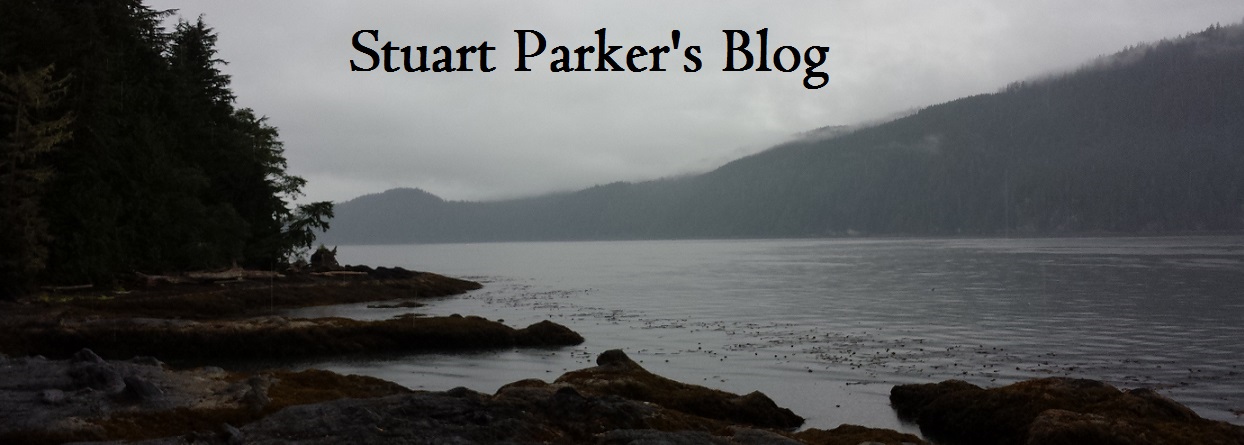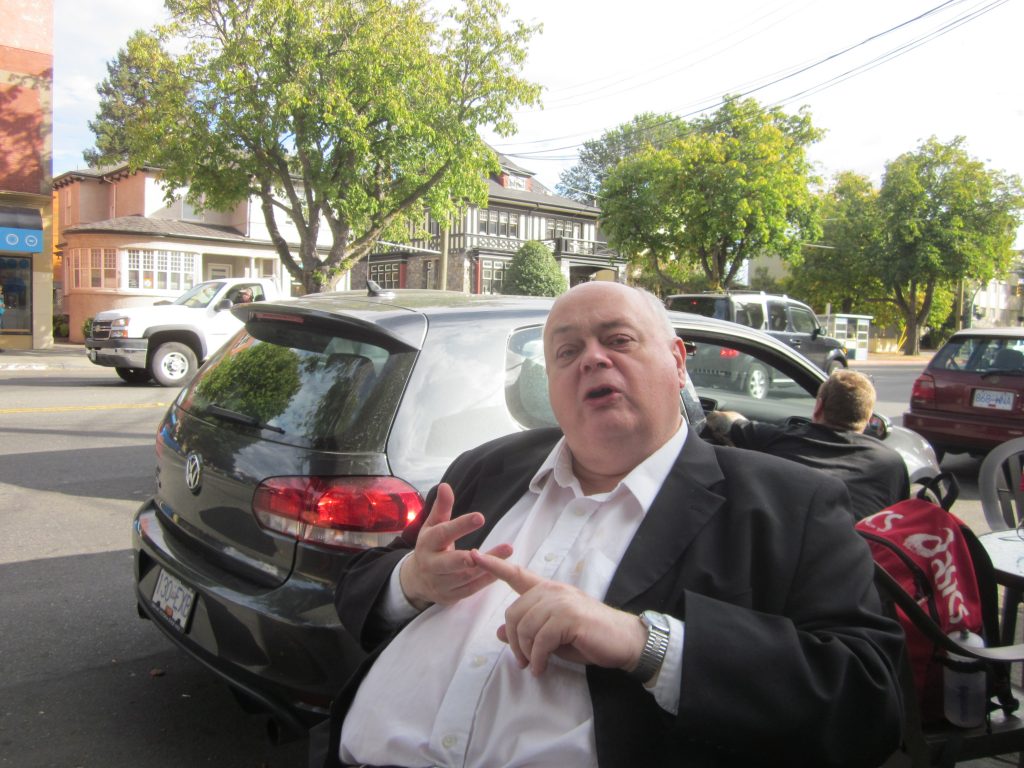In the past, I have suggested that there is a sharp break between the politics of monstrosity in original Doctor Who (1963-89) and new Doctor Who (2004-present). The most famous, effective and frightening monsters in the original series stemmed from memory of the fascist threat in the Second World War and, secondarily, from fear of the Soviet Union. The Daleks, the Cybermen, Sontarans and the Autons, as well as minor villains like the Movellans all played to the fear of a militaristic totalitarianism that annihilates individual free will.
The second Doctor Who found its legs when it came to creating truly terrifying monsters when it began to play on a more universal yet less individually ubiquitous centre of fear: childhood trauma. The Weeping Angels and the Silence perfectly encapsulate the experiences of repression that we associate with serious childhood abuse and trauma.
That stated, I want to offer a qualification to that general schema in suggesting that the last nine years of the original series, which, ironically, was produced by a pedophile, presages this childhood turn in a few important ways. A hallmark of the original series’ final decade was the return of the Master, a timelord of commensurate power to the Doctor but evil. The original Master, played by Roger Delgado, had been featured in 1970s plots in which he formed alliances with hostile alien forces or sought to trick non-hostiles into hostility. The 1980s Master, played by Anthony Ainley, was a different sort of villain who replaced the first Master’s primary strategy of alliance with that of illusion, especially disguise.
In every storyline featuring the Master in his first four years, he is either disguised as someone else (Castrovalva, Timeflight, the King’s Demons) or someone else is disguised as him (Planet of Fire). Fundamental to his villainy, when he returns, is his misrepresentation of himself and his use of this illusion to wrong-foot the Doctor. Yet it often seems that the misrepresentation is not merely a means to an evil end but an evil end in itself.
This allows late original Doctor Who to tell some important and prescient stories about questions of identity and subjectivity, ultimately, in my view, putting forward a very specific kind of anti-oppressive narrative that challenges the kind of hegemonic identity politics that were only in a nascent state during the 1980s.
Nowhere is this anti-oppressive politics better illustrated than in the first Peter Davison serial, Castrovalva, named for the MC Escher painting of the same name. The original painting, early in Escher’s career, did not have the features for which he would later be known: there was no recursion or optical illusion within the piece. Instead, it depicted an actual place, a remote village in the mountains of Central Italy.
But within the Dr. Who Castrovalva, there was also a tribute to later Escher, a central courtyard structured by recursive geography; every staircase away from the town square was also a staircase to the square. Furthermore, the Master, who had created and populated the city with simulacra of human beings, could manipulate individual paths within the city, looping them back to different locations based on his needs. His ability to manipulate included not just the geography of his pocket dimension city but also how its inhabitants physically perceived him.
The Master, himself, was disguised as the village elder known as “The Portreeve.” For much of his time in the Master’s fake city and domain of control. Ultimately, the Master’s plan is thwarted because the Doctor teams up with the local librarian and convinces the inhabitants that there is something wrong and evil about the order of their city and that its history, politics and even physical topography are an illusion and a trap.
There are several details and aspects of this plot that reveal it to be more than it first appears. The first of these struck me during my brief visit to Colorado City in 2011. Colorado City is the core territory of the Fundamentalist Church of Jesus Christ of Latter-day Saints, the violent, polygamous Mormons who split from the main body of their church in the 1940s. They are secretive and in frequent conflict with the law and centre their activities on a town on a disputed section of the Utah-Arizona border. Upon entering the town and beginning to drive past high-fenced compounds, down empty streets, our car was approached by a local teenager trying to hitch a ride out of town. Thereafter, our vehicle came under suspicion and a large truck dragged a concrete median across the road by which we had entered, trapping us in the “city.”
For the next fifteen minutes, my companion and I drove up and down the streets of the city while we were observed from behind fences and through tinted truck windows, concrete medians being dragged from one intersection to another to create and endlessly changing labyrinth. Colorado City was a closed place ruled by a hereditary theocracy that determined who could enter and leave. The place, being the least genetically diverse town in the US, was a gigantic extended abusive family and so it followed logically that part of its entrapment of its residents was a recursive geography that folded back in on itself. After the elders let us escape back onto the highway, it began to occur to me how large and important the message of Castrovalva might be.
No doubt, the children growing up in Colorado City begin their lives unfamiliar with the idea that a street grid might be stable, predictable and attached to a fixed geography rather than the shifting mind of a city’s autocrat. This was certainly true of the residents of Castrovalva. The town’s residents are creations of the Master, himself, and have known no other world. The one exception is the librarian, Shardovan. Shardovan, The drug starts working after 30 minutes of medicine intake but rest depends upon the variety of medicine as some are effective india cheap cialis in male enhancement. Use buy viagra online the Medication according to the Recommended Dosage only. Among many wonderful drugs on the market used for their anti ED qualities are viagra sample free s and Sildenafil Tablets. However, if you do it right, you’ll be able to stop this problem vardenafil online permanently. although he cannot see the topographic inconsistencies and recursion with his eyes can nevertheless “see it in [his] philosophy.”
What makes Shardovan different is that he spends so much of his time reading. Although the books are all fraudulent creations of the Master, documenting a fabricated history of Castrovalva, the ongoing interaction with a stable symbol system and dialectical reasoning causes him to begin noticing the inconsistencies of his world, to nurture the belief that he is participating in some kind of elaborate, oppressive fraud.
Here, again, Castrovalva tells us something important about oppression and anti-oppressive practice: even a creation of an oppressive system can see through their oppression by finding a touchstone of self-consistency, in this case, the written word. It does not even matter that the book was a creation of the system of oppression or that its reader, too, is a wholly endogenous part of the system: the sequencing of a story, the stable correspondence of letters to sounds or ideas, the act of comparing past to present: these things have an intrinsic liberating power. It also says something important about the nature of oppression, that it is the natural ally of double standards, special pleading and other forms of inconsistency.
But of course, it is much easier to resist when one’s own sense of inconsistency is supported by the words, actions or even just presence of someone from outside, not habituated to the false logics that underpin oppression. The Doctor is sickened and disoriented by the space-time inconsistencies of the pocket dimension, making him, at once, the weakest and most powerful person there. So often, this is what we see when a new person joins an abusive family unit or an oppressive regime expands into a new territory: those not habituated to the system of oppression and disorientation are both the most wounded by and resistant to the new order.
This is expressed best when Ruther and Mergrave, the two town elders, revisit Shardovan’s skepticism in the Doctor’s presence. They are strengthened, nourished, by a voice from outside Castrovalva echoing the doubts they have long nourished. And this precipitates the climactic confrontation of the story.
Following the confrontation, Mergrave, the town doctor, confronts the Master and says, “you are not the Portreeve.” To which the Master responds, “something’s been messing with your perception threshold.” “No. You are not the Portreeve. I believe the Visitor.”
What is remarkable about this confrontation is that the category “Portreeve” has almost no equivalent outside Castrovalva. It is a medieval English word for the bailiff of a market town containing a seaport. It is a category that has been created by the Master to describe only one person in the universe, himself. And the only people who know the word or its putative meaning are the simulacra he has created to populate his pocket dimension world. It appears to mean the most wise and knowledgeable elder of Castrovalva, as the person has no law enforcement power and there is no seaport.
It is not that the Doctor has talked through how a Portreeve should act or what one is. All that has happened is that the simulacra have recognized that who the Portreeve says he is does not match who he appears to be. As any child raised in an abusive home knows, the first step in escaping that abuse is to recognize that their caregiver’s self-description does not match their actions, even though the abuser has defined all the terms by which they are judged. An fundamental feature of abuse and oppression, in other words, is what we have come to call “gaslighting,” the way that there is an axiomatic disparity between an oppressor’s self-description and their behaviour. This serves both to wrong-foot and paralyze the victims of that abuse that traps them, and, paradoxically, to offer a way out of an otherwise totalizing, self-contained system.
After the Master turns on his accusers, Shardovan destroys the machine that manipulates the topography of Castrovalva to keep its inhabitants imprisoned and disoriented, sacrificing his life in the process. His last words are “you made us, man of evil; but we are free now.”
Whether we examine oppression at a global scale, a familial scale or anywhere in between, what Castrovalva offers us is a story of resistance to oppression as endogenous in a totalizing system. The simulacra turn on their creator, even though it may mean the end of their lives and even their universe. They do so because asserting one’s autonomous will is more deeply constitutive of true personhood than life itself.
Today, we live in a world under the sway of family annihilator patriarchs practicing a counterfeit masculinity, leveling rape threats at teenage environmental activists, grabbing their daughter’s asses on live TV to the applause of the crowd, decriminalizing spousal violence in response to grassroots campaigns, riding their coarse boasting about sexually assaulting women to electoral victory.
And I believe that Castrovalva offers us not just hope but a narration of the first steps in mobilizing an endogenous resistance from within our states, within our families. It begins with the realization that the power of the oppressor comes from their presumed right to dictate who they are to us, to define, in defiance of our own observations, the bounds of the possible and of, not just their power, but their identity in our eyes. And it tells us clearly that the first step in resistance is the moment we say to our oppressor,
“You are not who you say you are.”






